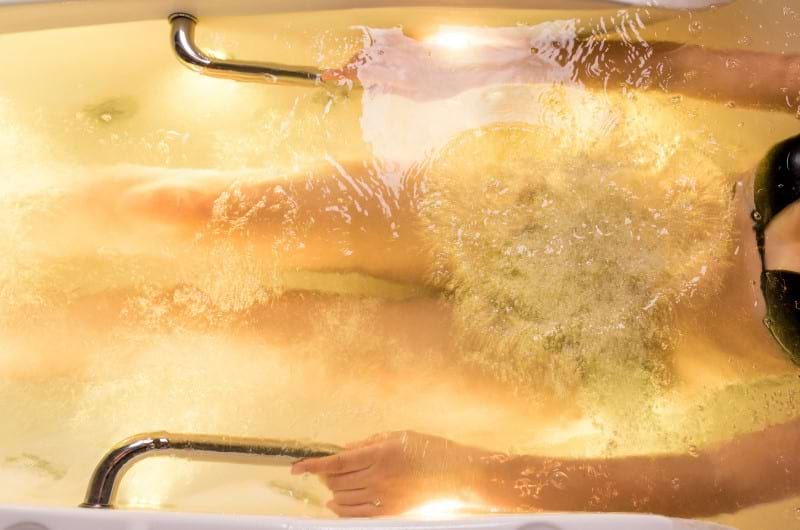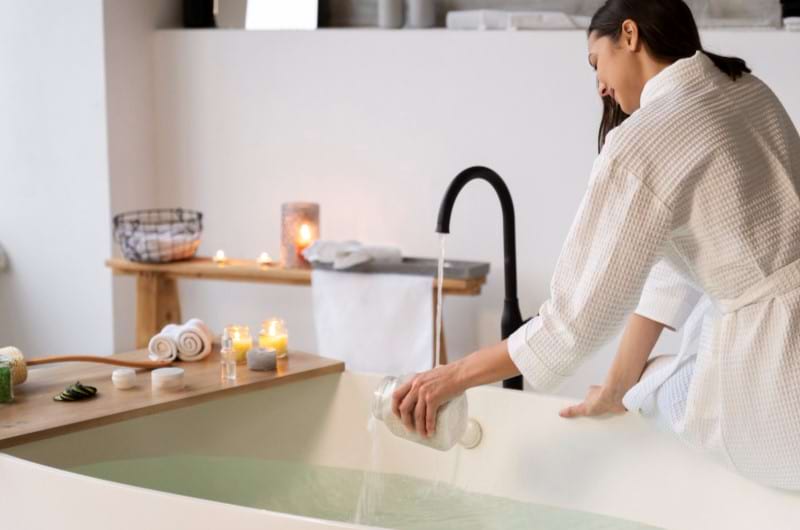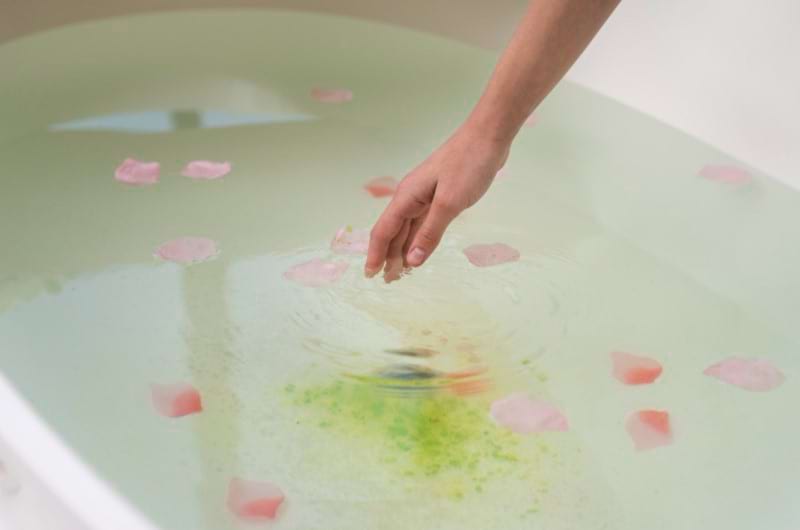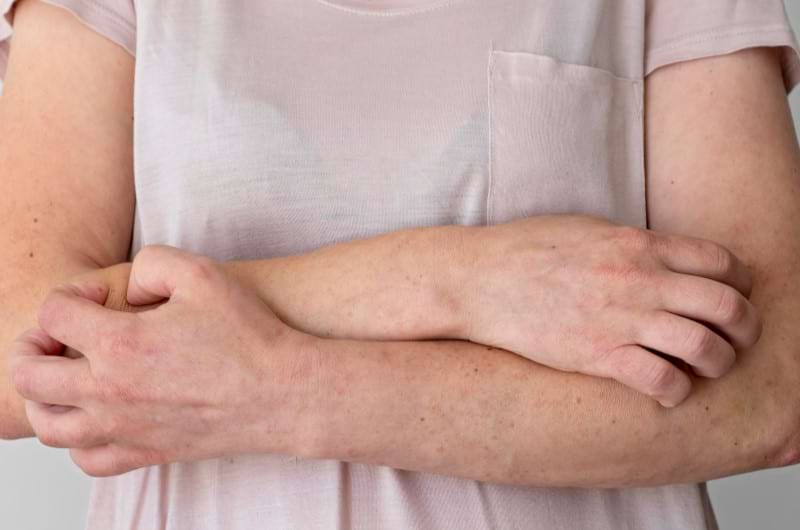The cause of lichen sclerosus is unknown, but there will always be alternative ways to treat it and reduce the discomfort. Seek medical advice and try as many alternatives as you can. Ultimately, try a Borax bath; it might be the solution you’ve been waiting for. You can have lichen sclerosus and still live comfortably. Just explore, and you’ll find what works for you.
Lichen sclerosus is a rare skin disease. It’s so rare that there’s one case of lichen sclerosus in every one hundred women in the United Kingdom.
In the United States, the rarity shoots up a bit as studies show an estimate of between 1 in 300 and 1 in 1000 individuals.
Despite the massive population in these places, these estimates are close to what we have in Asia and Africa.
Meanwhile, even with the rarity of this skin disorder, one can’t afford to be less careful. Anyone can be that particular case. Right? So, the first preventive measure is knowing all there is to the disorder.
What exactly is lichen sclerosus?
Lichen sclerosus is a chronic inflammatory skin disorder that primarily affects the genital and anal areas of a victim’s body, causing white, thin, parchment-like skin patches.
It can also be known as Lichen Sclerosus and is usually shortened as “LS.”
Meanwhile, lichen sclerosus can be called “white spot disease” due to its characteristic white spots on the affected part of the victim’s body.
The first documentation of lichen sclerosus dates back to the 19th century.
In 1887, British dermatologist George Henry Fox was known for his many groundbreaking discoveries in the then-developing world of dermatology.
His maiden research on observation while tending to his female patients led to the discovery of LS. He called It “lichen sclerosus et Atrophicus.”
It’s equally essential for you to know that at the time of writing this, the cause of the LS is unknown. It’s believed to be multifactorial.
However, dermatological researchers from professional bodies and private researchers have all presented hypotheses about the possible causes of LS, centering around individual patient’s genetic makeup, hormones, and immune system.
Although LS is a disorder that can happen to literally anybody, regardless of gender or age, studies show that certain groups of people are more prone to contracting LS.
Who can contract lichen sclerosus?
Lichen sclerosus is more common among postmenopausal women aged 50 to 60.
It also quickly gets to prepubescent girls. The disorder is also traced to the family line. If you have an LS patient in your family, you can contract it.
Since LS is a skin disease, dermatologists believe that people with other related skin diseases have a slightly higher chance of getting LS.
How do I know that I have lichen sclerosus?
1. White patches
Just like every other known disease out there, LS has its unique symptoms.
However, it’s essential to understand that you still need the services of a dermatologist to be sure if these symptoms are actually what you think they are.
From all Indications, the primary diagnostic clue to LS is the white patch-like surface of the affected part. This is even where the disorder gets its informal name: White Spots Disease.
The affected part will display viable signs of change.
It will grow more masses of the parchment-like texture in a way that will make the part fragile.
You can easily spot the difference between this part and your normal skin.
2. Itching
Itching seems to be one of the foremost symptoms of many skin disorders, from eczema and scabies to Urticaria (Hives) and contact dermatitis.
In the case of LS, the intensity of the itching may vary depending on the severity of the irritation the white patches are beginning to cause.
In most cases, people with LS tend to think of medical intervention when the itching gets intensive and causes discomfort—ones that might lead to further inflammation, redness, or even swelling.
Other symptoms may include painful sex, bowel movements, and skin fragility.
It makes that part of the skin prone to irritation and inflammation.
How can I treat my lichen sclerosus?

In standard practice, there are several ways to combat LS.
Some include using specially formulated topical corticosteroids, moisturizers, ultraviolet light therapy, biopsy, diet plan, and immune-modulating creams.
Other dermatologists even advise a lifestyle change, like good hygiene and alternative clothing.
Some recommend abstinence from things that trigger the symptoms, while others suggest surgeries. The latter usually comes off as a last resort.
Here is a unique approach to treating lichen sclerosus. It’s called a Borax bath.
What is a Borax bath?
Borax is a naturally occurring mineral. It’s a white, odorless powder soluble in water and other solvents.
The chance that your moisturizer or lotion has Borox as one of its ingredients is high because it has long been adopted as one of the primary chemicals for the production of skincare products.
A well-calculated mixture of Borax with glycerin, camphor, and distilled water makes up a valuable solution in cosmetology.
It enhances the removal of excess oil, dead skin, and even bacteria. This has made Borax an essential ingredient in cosmetic products.
As a patient battling lichen sclerosus, a Borax bath might be all you need to improve the symptoms and get your comfort back.
How can a Borax bath help my lichen sclerosus?
Unlike other acidic salts like Boric acid, Borax is a weak salt essential in cosmetology when paired with other ingredients.
Subtle salt tends to work when a few alternatives fail to give results.

As a cosmetological ingredient, Borax has alkalinity, making it not just a perfect ingredient for your toners, cleansers, moisturizers, and other cosmetic products but equally an ideal ingredient for your bath.
That aside, let’s discuss more benefits of a Borax bath:
1. Itching and inflammation relief
As a weak acid, Borax possesses antifungal and antibacterial properties that reduce the intensity of itching and Inflammation.
It has been admitted by several dermatologists to be effective in treating other itching-related skin disorders like eczema and acne.
As a significant ingredient in your bath soak, Borax can help relieve the itching that comes with being a lichen sclerosus patient.
2. Detoxification
Borax is a known chelating agent. Chelating agents are compounds that contain molecules that can bind to other molecules.
In a Borax bath, the possibility of Borax molecules binding with toxins in the body and eradicating them from the body is high.
That makes it an excellent alternative to detoxification, a big deal to an LS patient since the disease itself results from toxins.
As an LS patient, it also improves your lymphatic system.
3. Enhanced circulation
LS patients are usually restless and uncomfortable, which can hinder blood circulation.
Borax has alkaline properties that can speed up blood circulation and even soothe sore muscles on a wide margin.
That can go a long way in reducing the fatigue and muscle pain caused by the lengthy discomfort caused by the inflammation and itching or the general disturbance that comes with being an LS patient.
Other ingredients you can add to your borax bath
Borax is best and more effective when mixed with other cosmetic ingredients. These ingredients should be carefully selected.
The recommended ingredients for a perfect Borax bath are:
- Epsom Salts
- Baking Soda
- Milk
- Honey
- Essential oils
You can equally top it up with a pleasant fragrance. Although the choice of fragrance depends on your preference, the commonly used ones are:
- Lavender
- Peppermint
- Geranium
- Chamomile
With these ingredients, you can make good Borax bath recipes.

It depends on the type of bath you want—relaxing, soothing, or exfoliating baths.
Just be creative, and don’t be scared of trying. A Borax bath might be your only way to conquer lichen sclerosus.
What are the risks of Borax baths?
The risks involved in Borax baths can be boycotted if caution is taken.
The primary precautionary measure is to avoid excessive use of Borax powder in your Borax bath soak.
A maximum of 120 milliliters per full bathtub is recommended.
Secondly, avoid letting the content of your Borax-less bath soak get into your mouth. Avoid it at all costs.
Thirdly, skin types are peculiar. So, you should watch out for signs of irritation or allergy while observing your Borax bath.
Endeavor to discontinue usage if notice a sign of allergy or irritation.
Other precautionary steps to consider during your Borax bath include:
- Borax can get dangerous if exposed to high temperatures. Do not use Borax in hot baths. A Borax bath should always be a warm bath.
- A Borax bath is not a usual warm bath. Do not stay too long in a Borax bath soak.
When not to have a borax bath?
Borax baths are unsuitable for certain people, even if they suffer from lichen sclerosus. These people are:
- To avoid ingesting the bathtub content, children under 6 shouldn’t be allowed Borax baths.
- It’s advisable for pregnant women and lactating mothers to find alternatives to treating lichen sclerosus other than Borax baths. It’s not safe for them and their babies.
- If you have susceptible skin and then suffer from lichen sclerosus, it’s recommended that you try other means of treating the disease. If you must go ahead with a Borax bath, be observant and discontinue usage if you notice irritation.
FAQs
Is there a cure for lichen sclerosus?
As at the time of writing this, there is no permanent cure for LS. However, innovative ways exist to improve the symptoms and reduce the intense discomfort of having the disorder. A Borax bath is one of these many ways.
What is the best cream for LS patients?
Steroid creams and ointments like dermovate and betamethasone dipropionate can help treat skin issues.
Are there any home remedies to treat LS?
There are no home remedies to treat it, but medical cream or professionals suggested treatments can help you avoid burning and itching conditions.
References
- https://www.lsvcukawareness.co.uk/borax-and-lichen-sclerosus.html
- https://www.earthclinic.com/mobile/cures/lichen-sclerosus.html
- https://www.stuffthatworks.health/lichen-sclerosus/treatments/borax-soaks
- https://www.amoils.com/blogs/health-blog/lichen-sclerosus
- https://www.axahealth.co.uk/health-information/skin/lichen-sclerosus/
- https://www.researchgate.net/publication/224976781_Recognition_and_Management_of_Vulvar_Dermatologic_Conditions_Lichen_Sclerosus_Lichen_Planus_and_Lichen_Simplex_Chronicus
- https://www.diseasemaps.org/lichen-sclerosus/top-questions/natural-treatment/
- https://emedicine.medscape.com/article/1123316-overview#a4
- https://www.bad.org.uk/one-in-five-women-with-a-vulval-health-condition-contemplate-self-harm-or-suicide/
- https://www.ncbi.nlm.nih.gov/pmc/articles/PMC7522895/
- https://www.reuters.com/article/factcheck-detox-baths-covid-19-vaccines-idUSL1N2SF2L


